Wouldn’t it be wonderful if children were learning every minute they were at school? Learning while eating, learning through play…rather than just their designated ‘lesson’ times?
We’d never have to stress about the full-to-the-brim curriculum. And meeting those reporting deadlines? No problem!
Unfortunately, there are just not enough hours of the school day to fit in everything we wish we could teach our kids. Realistically, even the most attentive of kids need to give their brains a regular break – and so do the teachers! You can’t cram content into every minute of every day, and nor should you try to.
Teachers are always treading the fine line between delivering the curriculum in a timely manner, and not causing cognitive overload in our students.
In our blog article 10 Ways to Improve Student Concentration, we discuss just how important brain breaks are as a way of managing student engagement. Physical activity does wonders for resetting concentration and re-engaging your students in your content.
I know what you’re thinking…so, how do we make time for these necessary interruptions without compromising teaching time?
Learning Through Play the Teach Starter Way!
Our amazing resource creator, Royce, has developed an Active Learning Resource Pack to help you and your students maximize learning, and minimise brain overload.
This wonderful teaching resource contains a number of different games to promote fun, active ways to revise your content.
Play them as a whole class, or in small groups! These games make great revision activities, consolidation strategies, or simple mid-lesson brain breaks.
Read through the cards to ensure you have extra equipment or resources you may need, and watch your students achieve their learning goals in a physical setting!
Multiplication Hopscotch Active Learning Game
Help your students consolidate the fundamentals of multiplication with this fun hopscotch game.
Equipment:
- chalk
- a hopscotch strip numbered with a multiplication fact sequence.
How to play:
- As students hop or stomp on the multiples, they need to skip count each multiplication fact, then repeat in reverse.
- Once the students have mastered their skip counting, the multiples can be removed and replaced with the numbers 1 to 12. Revise any multiplication fact!
This game can also be used for revising literacy skills – laminate phonics, spelling and sight words for quickly interchangeable squares!
Equation Tails Active Learning Game
Learning through play can be even more fun when you throw competition into the mix! Teach the basics of numeracy with this game.
Preparation:
- Prepare strips of paper with basic equations (or more difficult equations for upper grades). Distribute these to students before commencing the game.
How to play:
- Students wear the paper strips with equations on them like tails.
- When instructed, students aim to steal the other students’ tails. In order to keep a stolen tail, the thief must correctly answer the equation. If they are unsuccessful, they have to return the tail and the owner is free to continue!
This game can be used for so many different topic areas – use vocabulary words, grammar conventions, or topical questions as tails!
Dodging Equations Active Learning Game
This quick and exciting game can be applied to a large number of different learning skills and revision. Answering numeracy, literacy, HASS or science questions has never been more fun!
Equipment:
- a soft spongey ball (preferably more than one!)
- basic number facts question cards
How to play:
- Students line up against a wall. One thrower is chosen.
- Each student in the dodging line has a question card and the thrower has their own set of question cards.
- The thrower must try to get a student ‘out’ by hitting them with the ball from the shoulders down. The students lined up need to dodge or catch the ball with their hands.
- If the thrower successfully hits the dodger, the dodger needs to present their question. If the thrower says the correct answer, the dodger is out. If the thrower is incorrect, they have to swap with the dodger.
- Alternatively, if the dodger catches the ball, the thrower will ask a question from their set of cards. If the catcher says the correct answer, they swap places with the thrower. If they are incorrect, they are out.
Adver-Relays Active Learning Game
Throw some drama into the mix! Ask your kids to act out their knowledge of verbs and adverbs for this active game. This game is a great consolidation activity to use in conjunction with our Strong Verbs powerpoint and Strong Verbs word wall!
Preparation:
- Create verb and adverb word cards, then gather them in separate piles. These could be created in a class brainstorm to make the game more relevant.
How to Play:
- Arrange the class into groups of at least four. Establish your relay distance (depending on your students’ age and ability).
- Ask each student to select a mystery verb and an adverb card. You might like to give students 5 minutes to collect any props they may want.
- Divide the group evenly to line up at each end of the relay course.
- Start the race! The first student must act out the combination of actions from both of their cards. Once they have reached the end of the course, the next student does their combination.
Students access their creative skills as well as consolidate their knowledge of verbs and adverbs – learning through play can be entertainment for everyone!
Ten Add Bowling Active Learning Game
Everybody knows about Ten Pin Bowling, but have you heard of Ten Add Bowling? Freshen up this family favourite with some number facts!
Equipment:
- a ball
- whiteboards or paper to record results
- ten numbered skittles (or plastic drink bottles)
- a smooth, flat surface to play on
How to Play:
- Arrange your class into pairs or groups of three.
- Ask each group to set up their skittles, either in a traditional triangle or in a group. Set the bowling distance at least ten steps away from the skittles.
- Students bowl the ball towards the skittles, aiming to knock over as many as they can.
- Add the numbers on the skittles to reveal a score. The winner is the individual who achieves the largest total.
The knocked over skittles can also be ordered to create the largest number possible, or arranged from smallest to greatest! A great game for any age level.
Divide and Conquer Active Learning Game
Promote team building with this quick and easy division game for the upper years.
Preparation:
- Prepare strips of paper with basic equations. Distribute these to the students before commencing the game.
How to Play:
- Provide the class with a division equation. Students then quickly arrange themselves into groups to represent the answer.
- The ‘remainders’ (those who are left over) play a game of elimination, for example Knee Tag. The students need to remain in their groups until this is finished.
- The winner of Knee Tag is rewarded by saying the next division equation. The groups disperse and find a new number!
Of course, this game works for multiplication, addition and subtraction too! Learning through play shouldn’t be stressful. The best part is that it is not an elimination game – each round starts with the whole class involved.

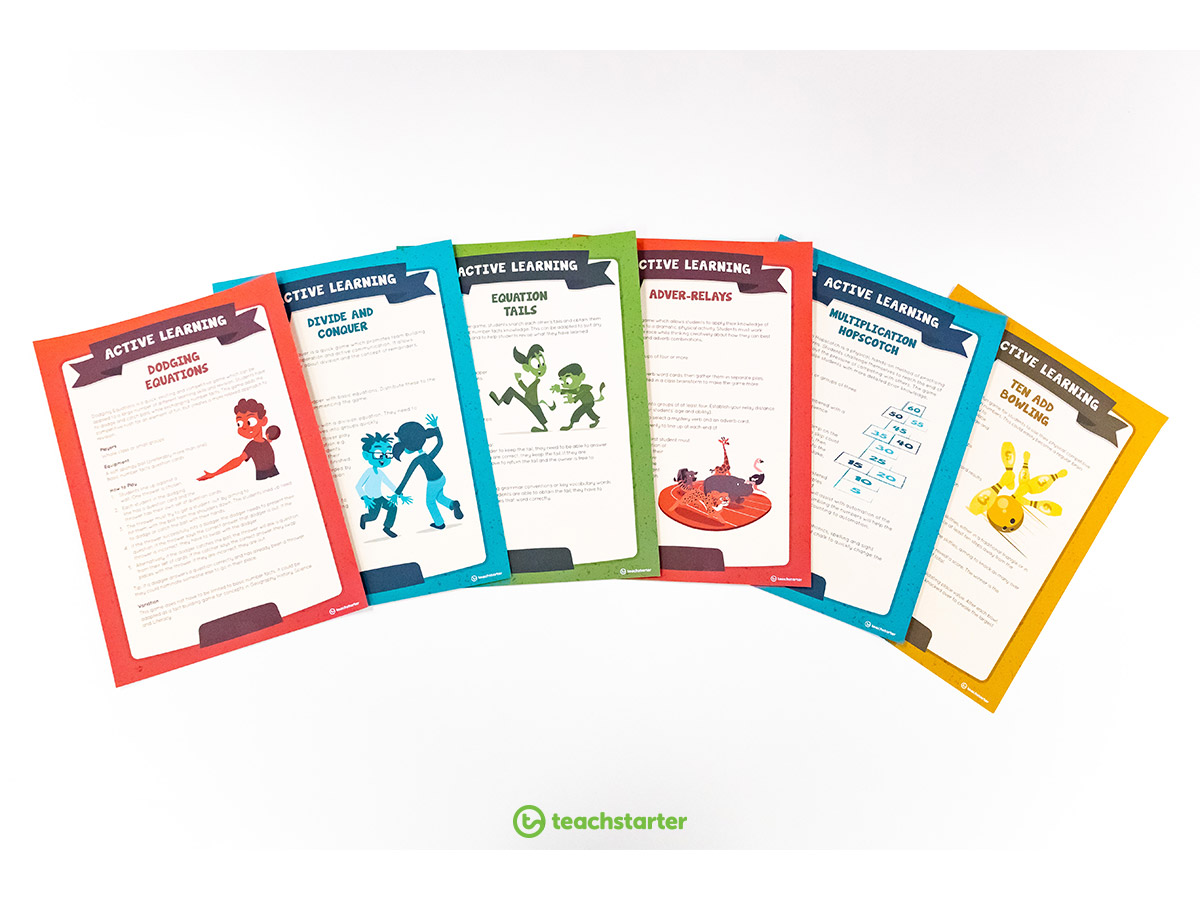
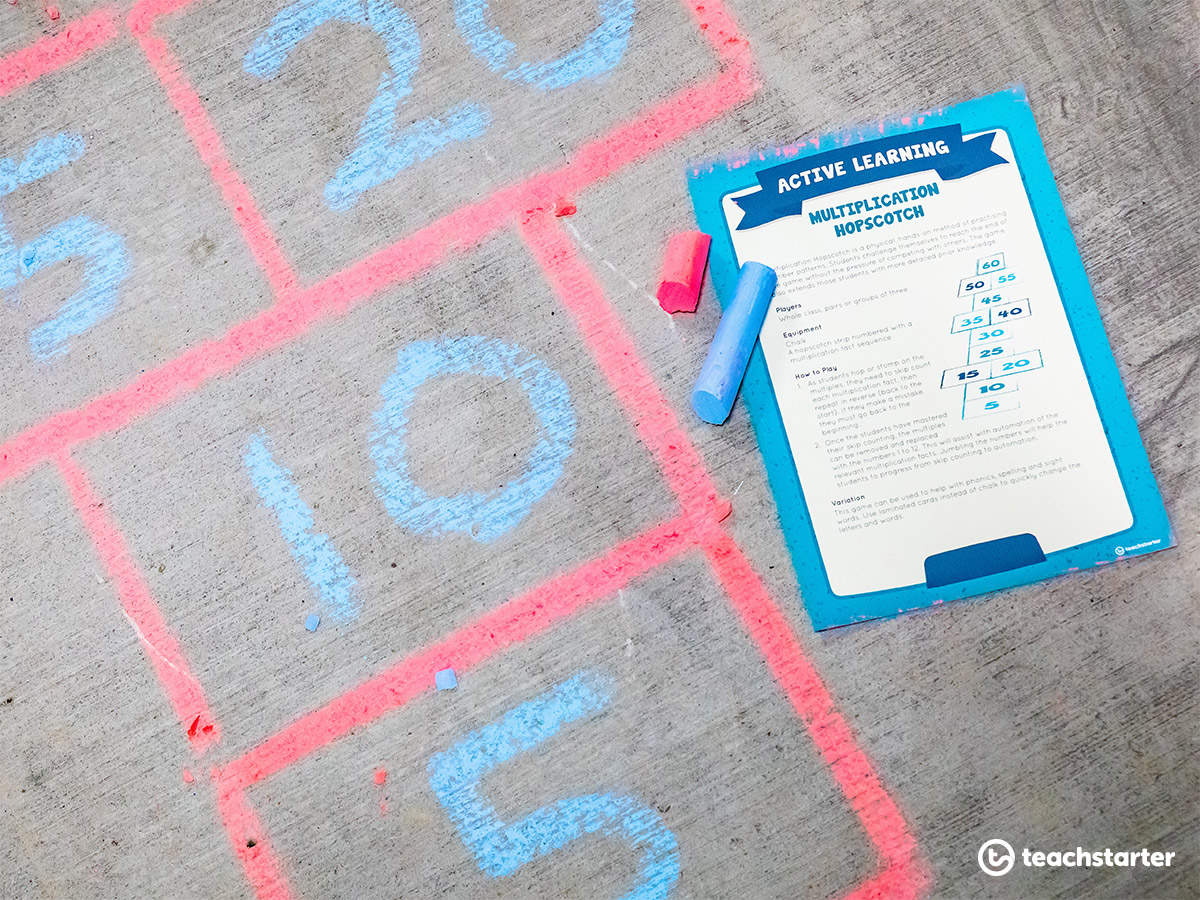
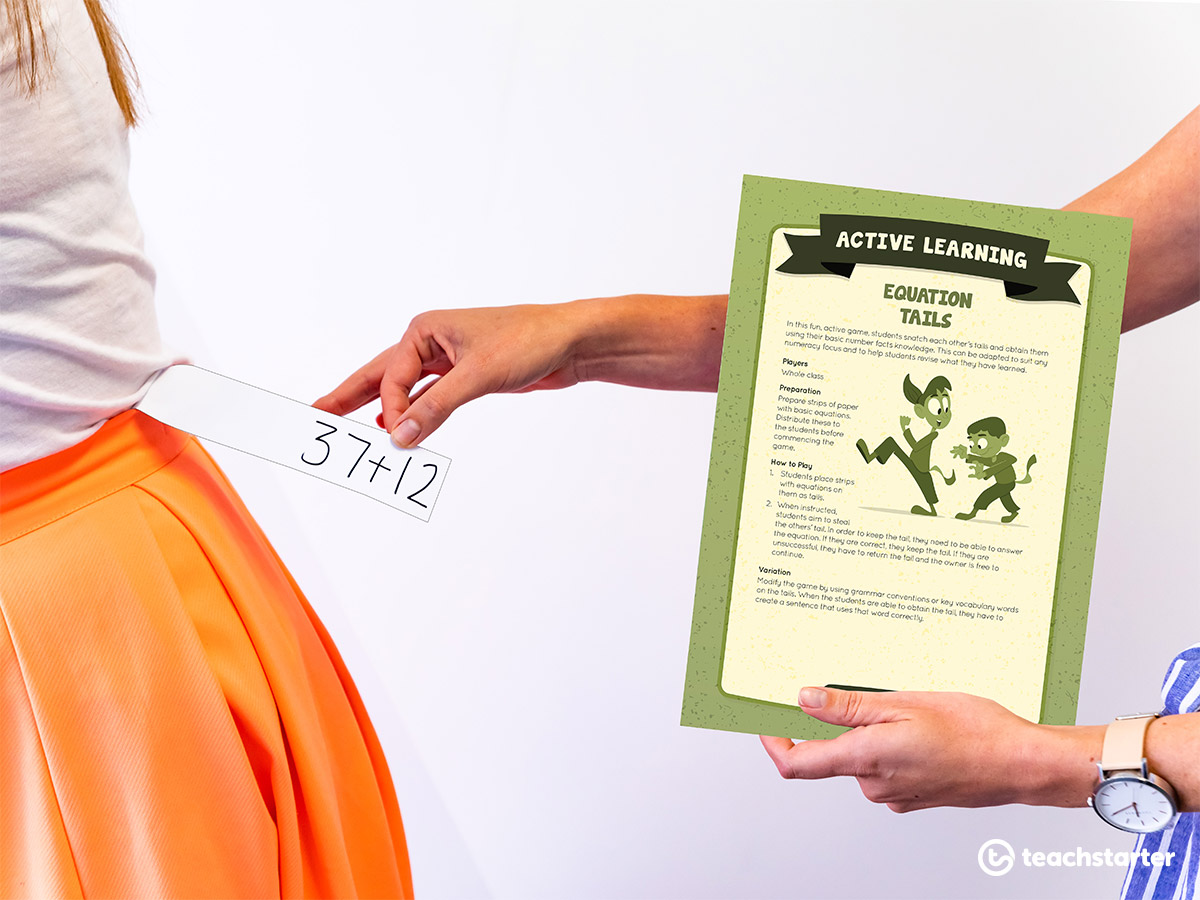

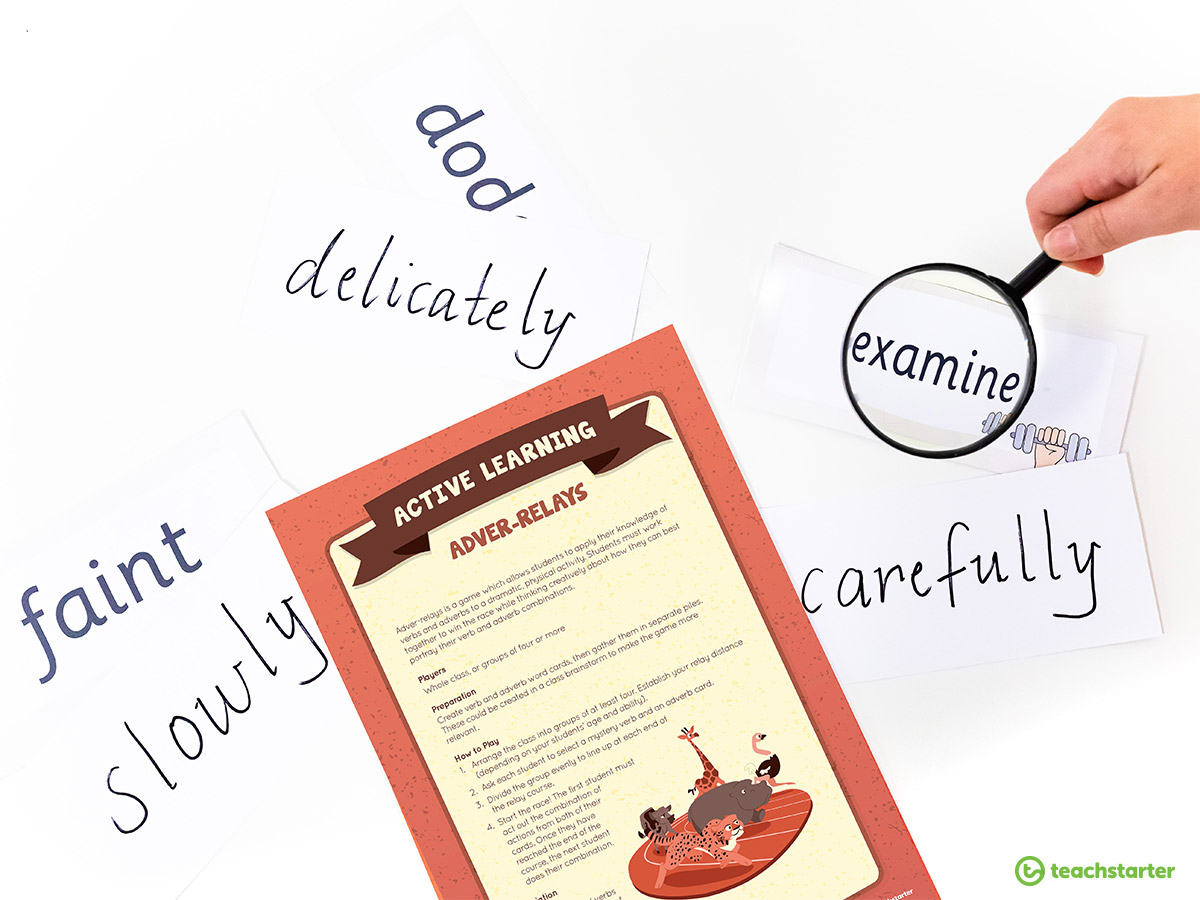
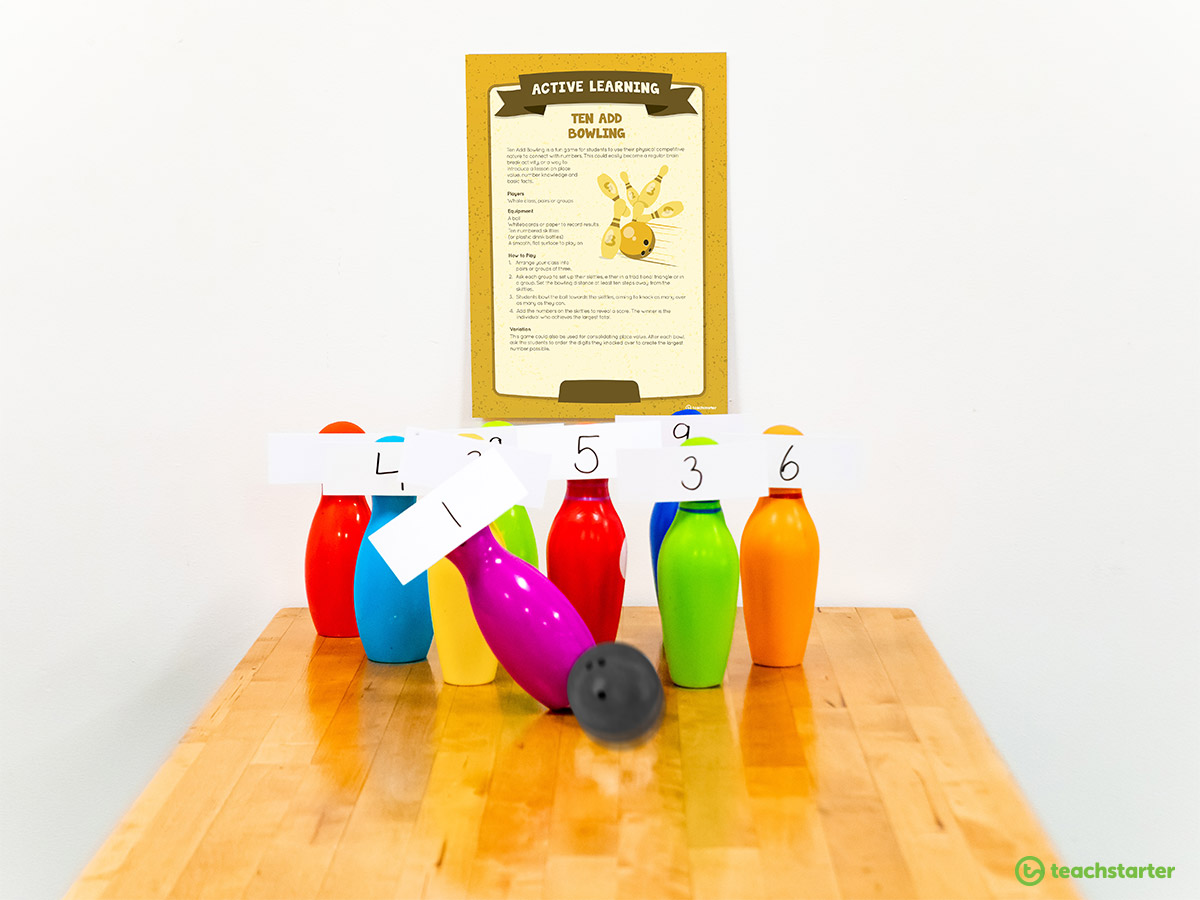
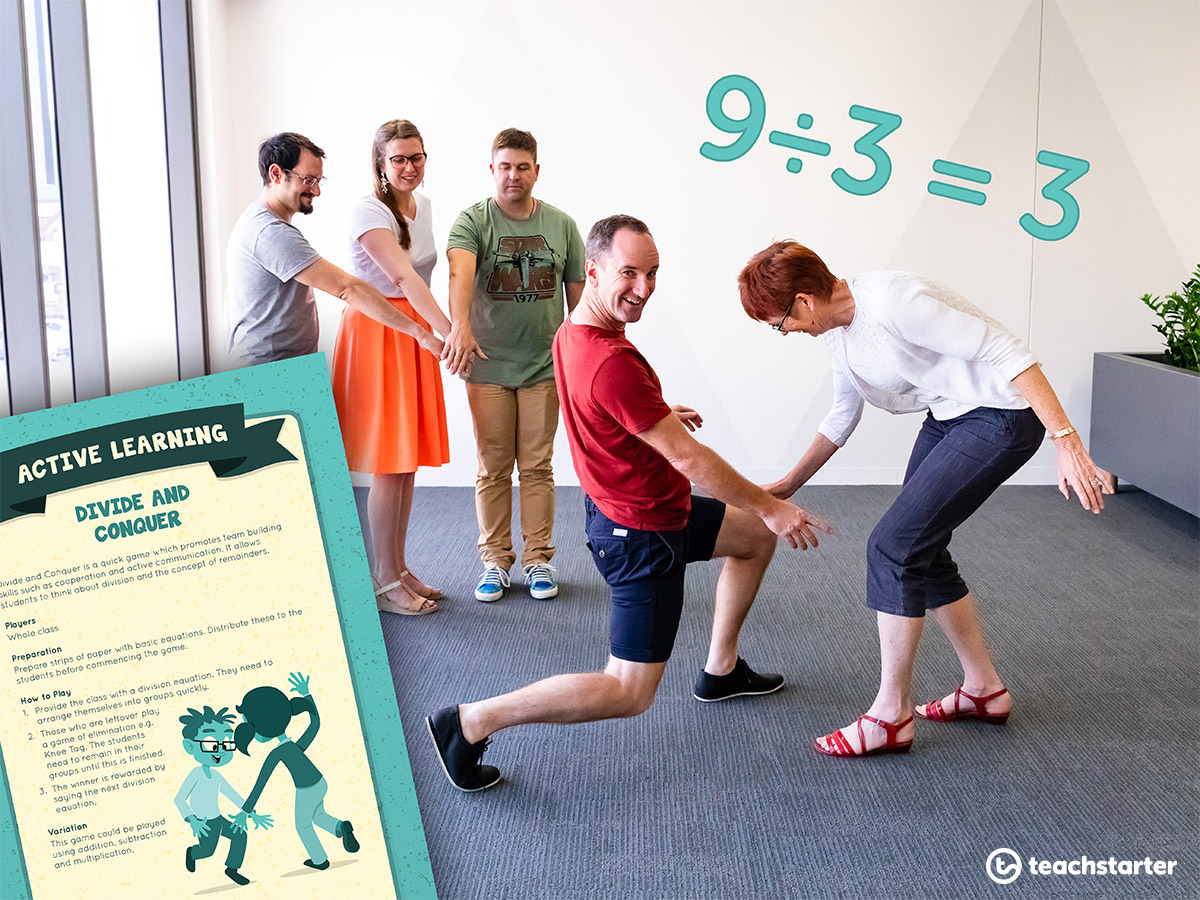






Comments